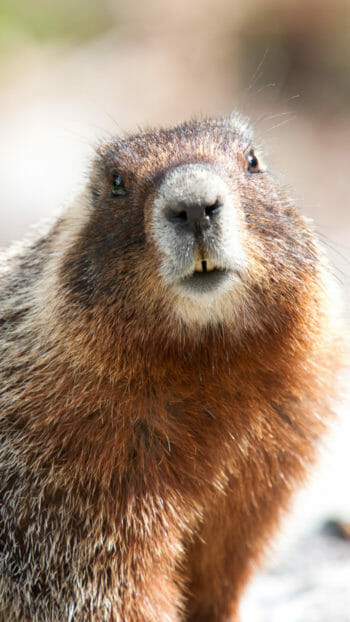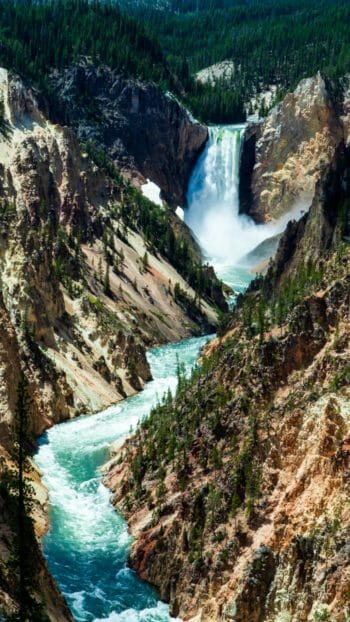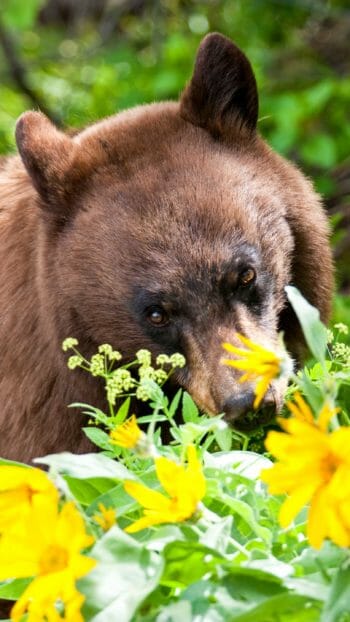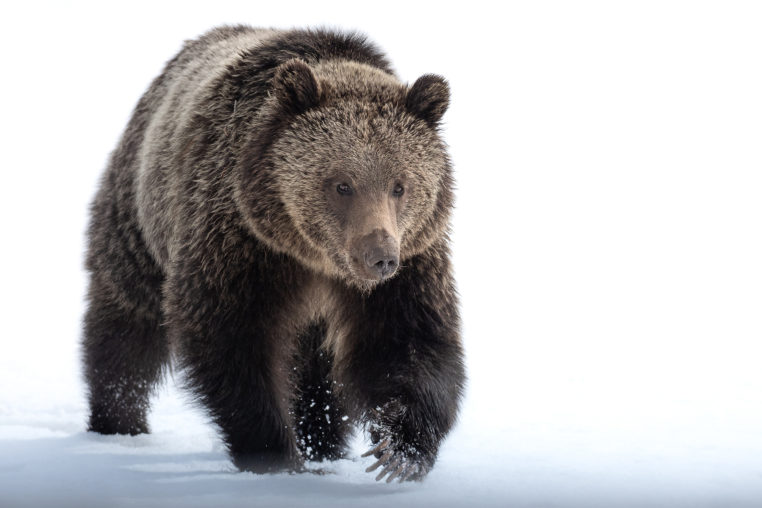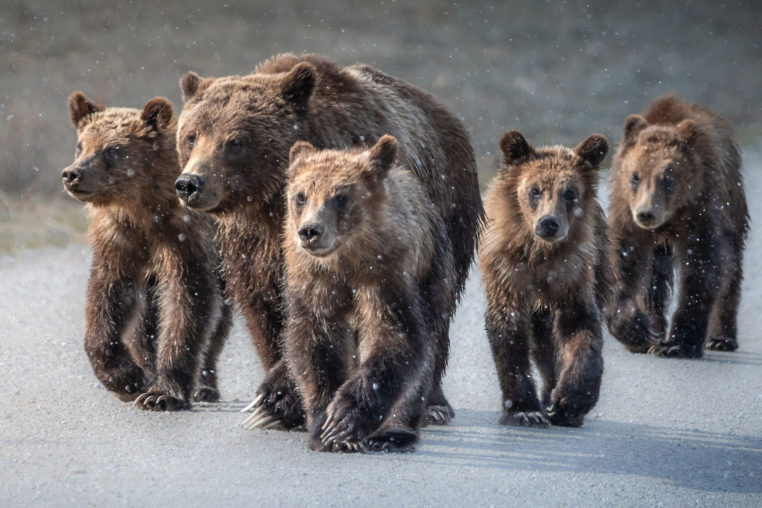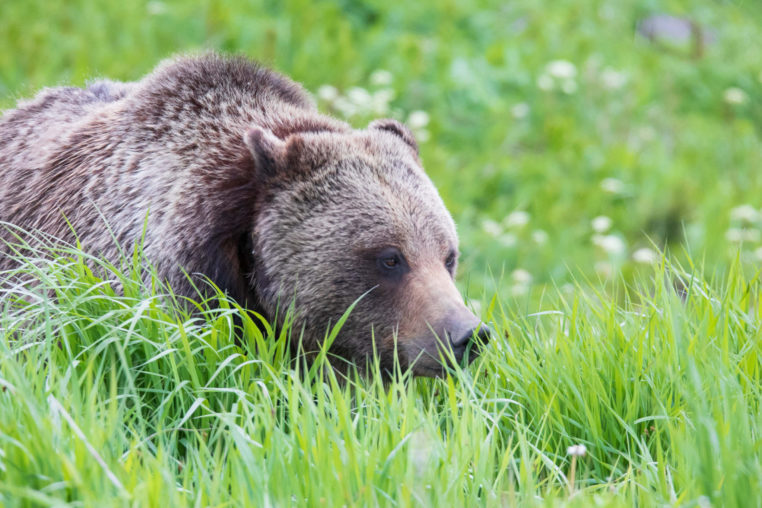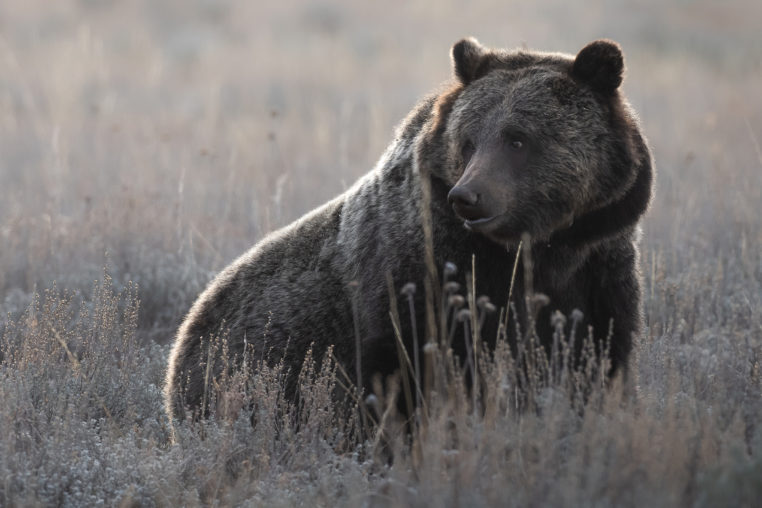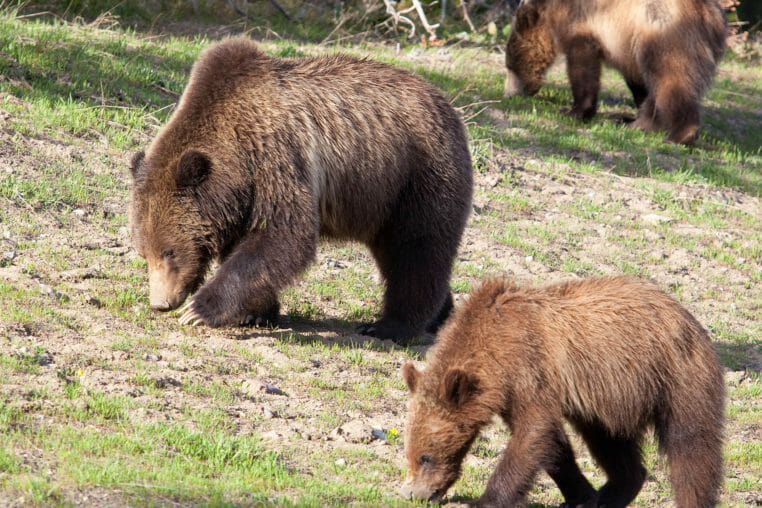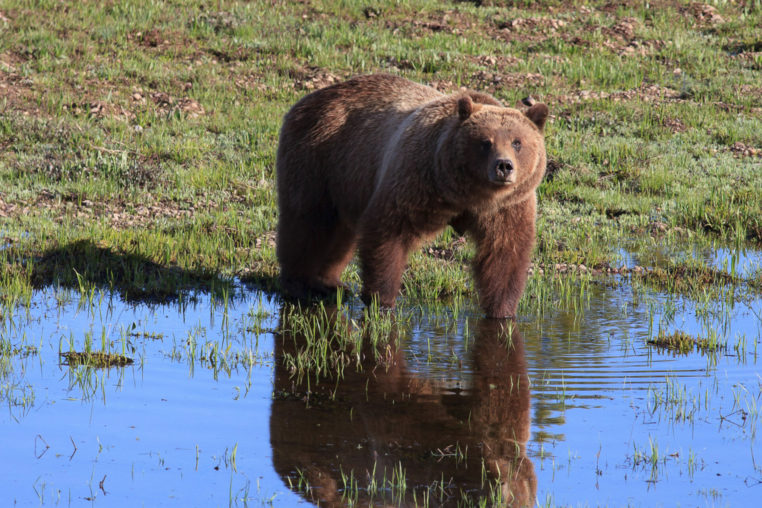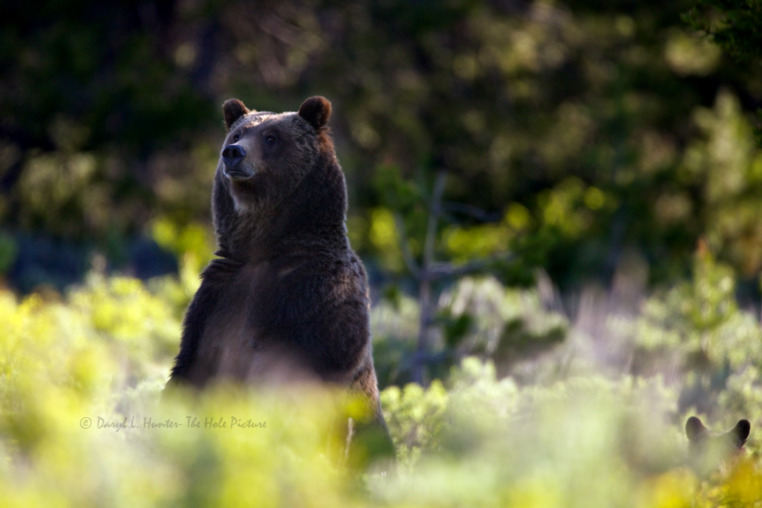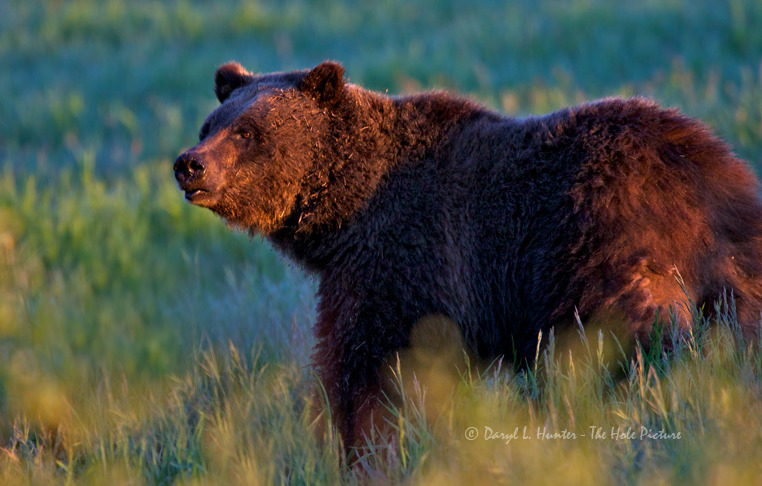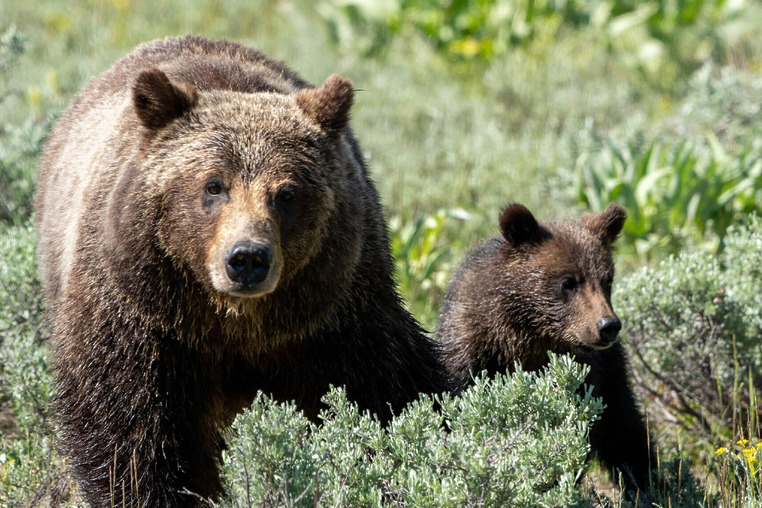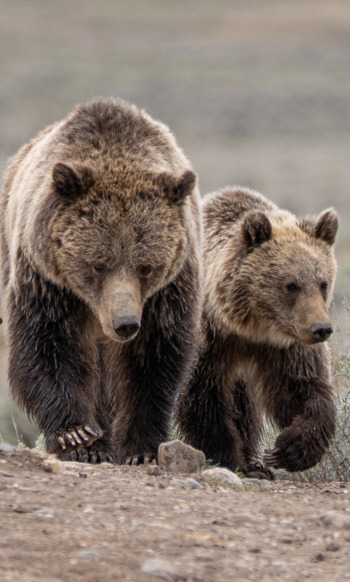
Ursus arctos horribilis
One of the most iconic animals in North America, the grizzly bear is a subspecies of the brown bear. Unlike their coastal relatives, which thrive on salmon runs and grow to enormous sizes, Yellowstone’s grizzlies inhabit inland ecosystems and are smaller than coastal brown bears. These bears are powerful symbols of wilderness, and their recovery is one of the most notable conservation success stories in the Greater Yellowstone Ecosystem.
Wildlife Viewing
- Yellowstone
- Grand Teton
Book Online
Watch For Wildlife On These Tours
About
Size and Appearance
Grizzlies in the Greater Yellowstone Ecosystem typically weigh between 300–700 pounds, with males (boars) significantly larger than females (sows). They are easily identified by their distinct shoulder hump, which is a mass of muscle used for digging. Their claws are long and slightly curved—perfect for tearing into soil and logs in search of roots, insects, and small mammals. Grizzlies often appear “grizzled” or frosted in color, resulting in their name.
Diet and Behavior
Like their black bear cousins, grizzlies are omnivores, but more than 80% of their diet is plant-based. They consume grasses, roots, berries, and insects, but will opportunistically prey on elk calves, scavenge carcasses, or feast on fish when available. In the fall, they enter a phase called hyperphagia, during which they may eat up to 20,000 calories a day to prepare for hibernation.
Hibernation and Reproduction
Grizzlies den up each winter, emerging in spring. Females wake mid-winter to give birth to cubs weighing just one pound. Thanks to delayed implantation, a sow’s body only implants fertilized eggs if she has built enough fat reserves to sustain a pregnancy. This ensures cubs are born only in favorable conditions.
Conservation Story
Once roaming from the West Coast to the Great Plains with a population of 50,000, grizzlies nearly disappeared due to overhunting and habitat loss. By 1975, only a couple hundred remained in the Yellowstone region. That year, they were listed as threatened under the Endangered Species Act, and their population has slowly rebounded. Today, spotting a grizzly in Yellowstone remains a highlight of any visit.
How to Tell Them Apart from Black Bears
Because many of our black bears are actually brown in color, they are often mistaken for grizzlies, but there are clear differences:
- Shoulder Hump: Present in grizzlies, absent in black bears.
- Face Profile: Grizzlies have a concave or “dished” profile, while black bears have a straighter profile.
- Claws: Grizzly claws are longer and less curved than black bears’.
- Ears: Smaller and more rounded compared to the taller ears of black bears.
How to see grizzly bears
Spring and fall are the ideal times to spot grizzlies. In spring, bears emerge from hibernation hungry and searching for mates in lower elevations while the snow is still deep, making them more visible. In the fall, they enter hyperphagia while they prepare for hibernation, drawing them out in search of food in the cooler weather. Keep an eye on treelines and in meadows for bear activity. Remember, bears disappear from the landscape during winter while they hibernate.
FAQs
What types of bears live in the Greater Yellowstone Ecosystem?
The Greater Yellowstone Ecosystem is home to two species of bears—the grizzly bear (Ursus arctos horribilis) and the American black bear (Ursus americanus). While they share some similarities, each has unique physical traits, behaviors, and habitat preferences.
When is the best time to see bears in Yellowstone?
Spring and fall are the prime bear-viewing seasons in Yellowstone. In spring, bears emerge from hibernation hungry and more visible in lower elevations. In fall, they enter a feeding frenzy called hyperphagia, spending much of their time searching for food before winter.
How can you tell a grizzly bear from a black bear?
The easiest way to tell them apart is by their physical features, not their color. Grizzlies have a prominent shoulder hump, a concave facial profile, and shorter, rounded ears. Black bears lack the shoulder hump, have a straighter profile, and taller, more pointed ears.
What do bears in Yellowstone eat?
Bears are true omnivores, with over 80% of their diet made up of plants. They eat grasses, roots, berries, pine nuts, insects, fish, and occasionally larger prey. Their diet changes with the seasons, depending on what is most calorie-rich and available.
Why is it dangerous for bears to eat human food?
Once a bear learns to associate people with food, it will seek out human sources such as garbage, campsites, or picnic areas. This often leads to dangerous encounters, and unfortunately, food-conditioned bears are usually euthanized to protect public safety. This is why park rules prohibit feeding wildlife.
Do bears in Yellowstone hibernate all winter?
Most bears in Yellowstone hibernate during the winter months, retreating to dens from late fall to spring. However, they are not true obligate hibernators, meaning if conditions allow—such as mild weather and accessible food—some may remain active.
Further Reading
What Time of Year is Best to See Bears?
Mar 25, 2024
The GYE is home to both black bears and grizzly bears, making it a top destination for those seeking to experience bear sightings in the wild. There are many areas of prime bear habitat that allow for opportunities to encounter bears going about their natural behaviors.
Why Do Bears Hibernate?
Mar 4, 2024
Bears hibernate in the winter as an evolutionary adaptation to survive through months of extreme scarcity. However, they are not what we consider “obligate hibernators”.

